
PLUGIN WEEK 2023: If you’ve made it your new year’s resolution to make some lo-fi music, there’s a wide range of free and/or cost-effective options out there to utilise. In this article, we’ll walk you through some of our favourites, but first, let’s go over some of the essentials of what making something lo-fi actually entails.
Typically, when making something lo-fi, we’re looking to emulate the nuanced imperfections and characteristics of cassette tapes and/or vinyl records. Whilst different plugin developers might dress things up in different ways, it can largely all be distilled down to the following:
- Mono/stereo – stereo wasn’t commonplace until the mid/late 1960s, meaning that older, lower fidelity recordings were often mono.
- Saturation/distortion – literally clipping-off of the peaks of sound waves is something that is commonplace on cassettes and vinyl. On cassette this is usually due to poorly maintained/dirty tape-machine heads or worn-out/damaged tape. On vinyl, it can be caused by an old/blunt stylus or a record being so overplayed that the peaks of the sound waves have literally been worn down and eroded away.
- Tempo/pitch fluctuations – cassette and record players are reliant on electrical motors, which (like all electrical motors) are prone to speed variations resulting from mechanical wear or inconsistent voltages. This manifests in the speed slightly oscillating/fluctuating, causing the pitch to go up and down. In most cases this was so minor that it was barely noticeable; however, on occasion, it could be very apparent.
- Noise – as vinyl records produce their sound by literally dragging a needle across the surface of a record, there is the byproduct of surface noise. Worn out records and/or a blunt stylus could make this problem very apparent in the form of white or pink noise. Tape machines have a similar byproduct of their mechanism in the form of tape hiss, a high frequency white noise.
- Lack of high-end detail – older consumer electronics typically didn’t yield as wide a frequency response of modern technologies, often culminating in a rolling-off of frequencies above around 10,000Hz (or even lower). This would often give older music formats a less bright, less detailed tonal palette.
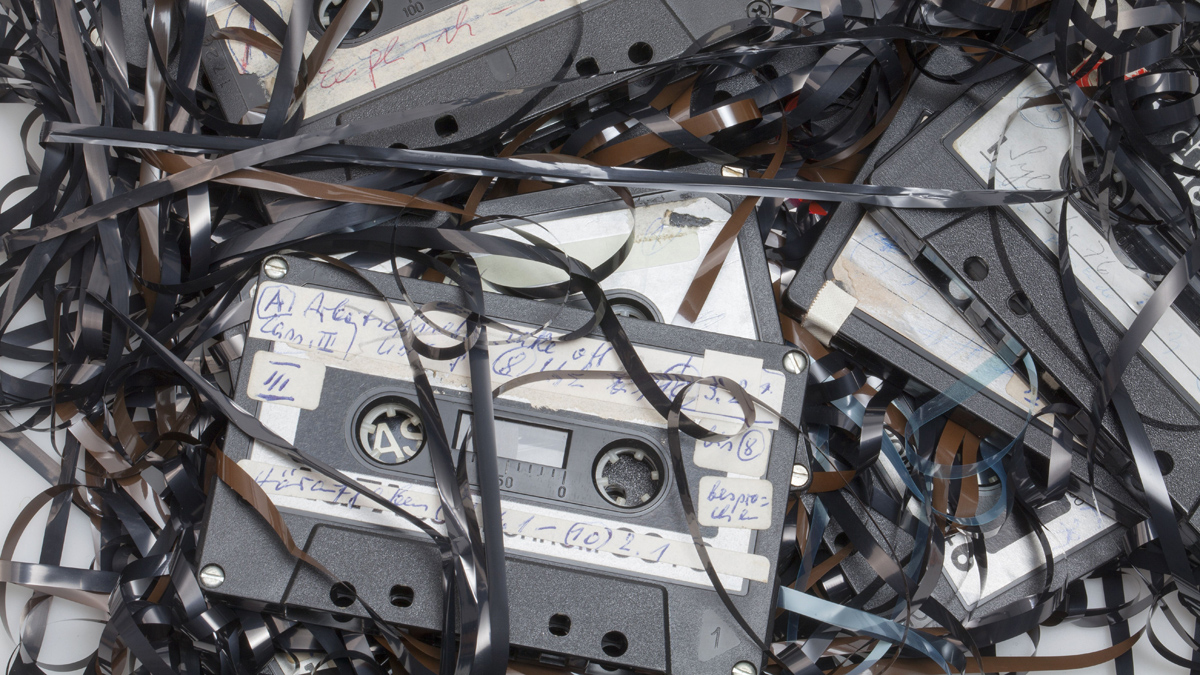
High quality and well maintained audio equipment of the past was capable of negating the majority of these issues to an extent, but for most consumers, they were just part of daily life, and typically weren’t given a second thought.
The advent of digital technologies such as CD and online streaming eradicated these issues. However, they now form part of an aesthetic choice for music makers looking to evoke the warmth and character of these old formats in new and modern ways. With that in mind, let’s dive into some of the best lo-fi plugins and explore what they can do.
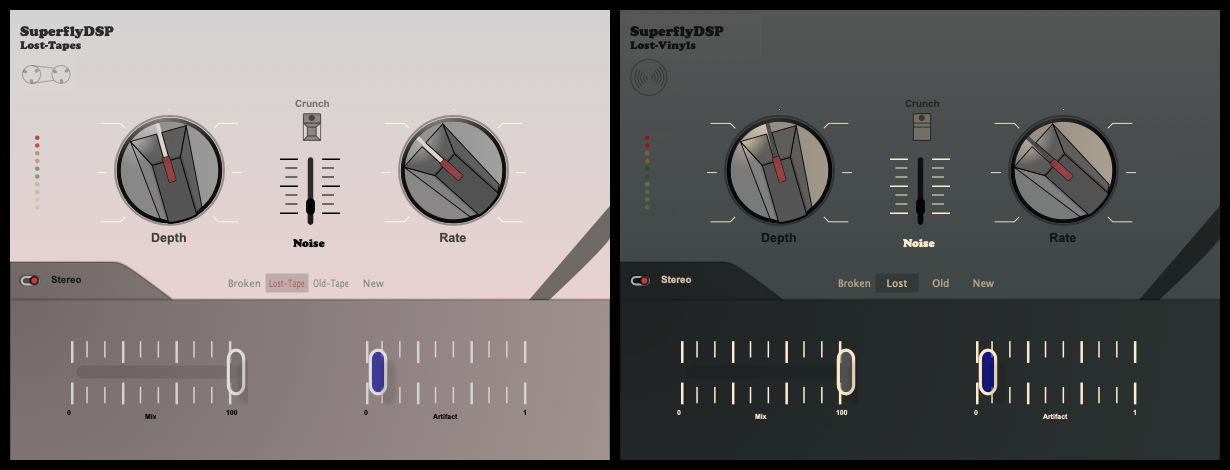
These two plug-ins use the same format and layout, but have sounds tailored to their respective emulated formats. Their interfaces are extremely intuitive, no-nonsense and mostly self-explanatory.
The saturation and tone-shaping is well crafted on these plugins and I’m particularly fond of the modulation shape. A nice addition to the standard formula of a low-fidelity plug-in is the four modes: Broken, Lost, Old, New.
Broken, Old and New are fairly self explanatory, and sound as you might expect. The Lost mode, however has a little extra spice that’s hard to pinpoint, but it’s extremely nice.
Also easy to overlook is the (very small) Stereo/Mono switch on the left hand side; great for turning a lush stereo sound into something with a bit of mono, vintage charm.
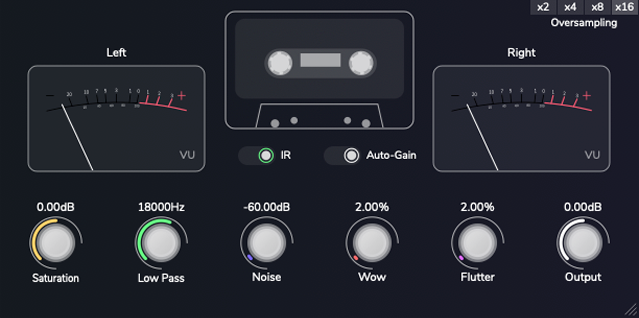
Another aesthetically pleasing and fairly self explanatory plugin for the most part. This one has a cool looking aesthetic, reminiscent of a 1980s stereo, VU meters and all. The controls take a more conventional approach to naming, and offer numerical values that are always on display (which I prefer to having to hover a mouse over a dial to see what its value is).
Alongside the usual tools of saturation, cutoff, noise, wow and flutter, there are a couple of features that set this plugin aside from its competitors. Firstly, in the upper-right corner, you’ll see it offers over-sampling options to help preserve certain qualities during the plugin’s processes.
The second is a relatively discrete IR switch. This is akin to a “mode” or “model” as it switches on/off an impulse response of an actual cassette, the result of which is very apparent with a distinctly different character. Personally, I like the IR on, as I prefer the crunchy saturation and tonal colour.
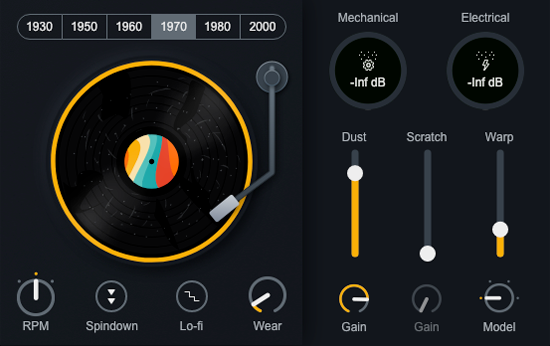
Probably the most well-known plugin on this list, iZotope’s Vinyl should be a fixture in every producer’s toolkit. It includes several operating modes dating from the 1930s to 2000s, each of which is essentially a different EQ curve that gets narrower the further back in time you go.
Beyond this, things get very customisable, as you can dial in precisely how much mechanical and electrical noise you want, as well as determine how dusty and scratched you want your record to be.
The warp is excellent on Vinyl; even fully cranked, it’s ever present without feeling overly intrusive. What’s more, it enables you to switch between a sine wave-based warp (which is akin to a tired electrical motor) to a peak wave-based warp (which is akin to a misshapen record – like one that’s stored flat or exposed to direct sunlight for too long).
There are also controls for:
- RPM – enables you to change the speed of the record pressing (the higher the speed, the more accurate and detailed the high frequencies are).
- Spindown – like pressing stop on the record player – a great trick for automating on/off.
- Lo-fi – applies subtle (and very warm) saturation.
- Wear – emulates the saturation created by the wearing down of a record’s groove
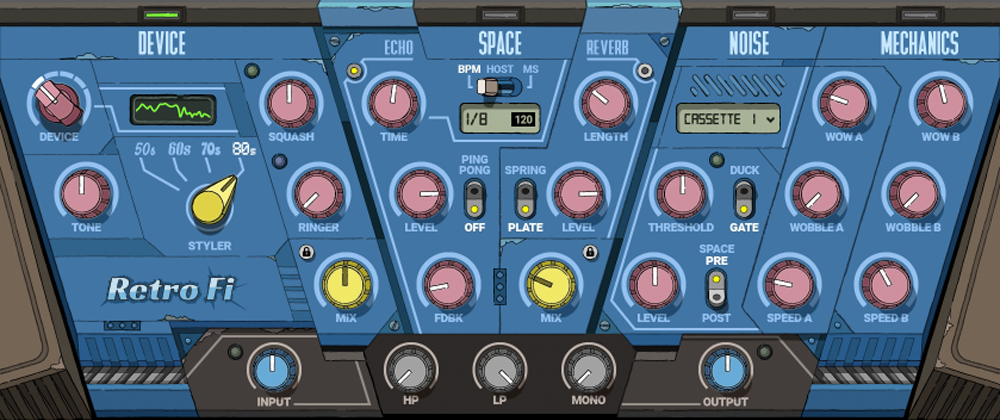
Whilst the above plugins have all been free, this one comes with a price tag. Its RRP is $199; however Waves is renowned for almost always having sale discounts on its products, and we’re confident that if you visit its website you’ll see this plugin available for under $50 (maybe even as low as $24.99).
Being a priced lo-fi plugin in a market dominated by lo-fi freebies means this needs to offer something the others don’t, and it doesn’t disappoint! We won’t bore you with detailed breakdowns of every feature – suffice to say that every parameter is heavily adjustable and customisable in ways that go beyond a lot of what’s covered by other plugins in this article.
Furthermore, there’s the inclusion of delays and reverb, which have both been tailored to sound and feel very aged and retro in their application.
Lastly, there are 65 Noise impulse responses taken from a range of equipment such as cassette players, records players, vintage synthesizers and more, which are ideal for adding a little dirt and character to your productions.
Waves Retro Fi feels like it’s been designed to be a one-stop-shop for all things lo-fi. A plugin intended to sit on a master bus to be used as delicately or intrusively as desired. I picked this up as a curious freebie alongside some other purchases a few months ago, but have found myself using it more and more in everyday situations (not just lo-fi projects). It’s a surprisingly versatile plugin.
5. Do it yourself!
Now, with what’s been discussed, it might have crossed your mind that you don’t necessarily need a bespoke lo-fi plugin to create a lo-fi sound, and you’d be right. Thinking back to the introduction of this article, we really only need three ingredients: EQ, Saturation and Pitch Modulation. As a Logic Pro user, let me show you how I would go about things.
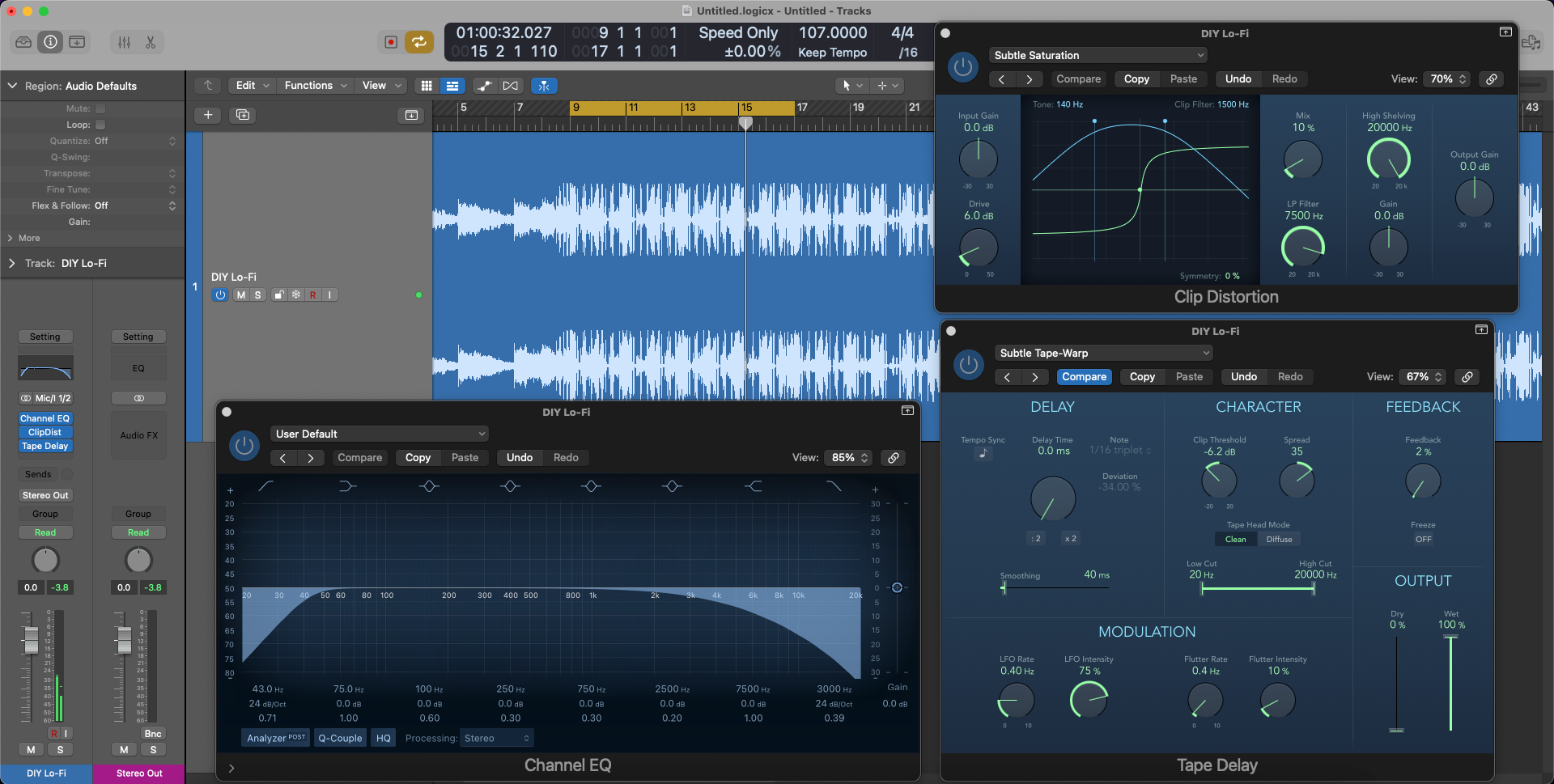
In the above example, I’m using the Channel EQ to filter out the extremes of the frequency spectrum, the Clip Distortion for a little bit of saturation andm lastly, my favourite delay…
